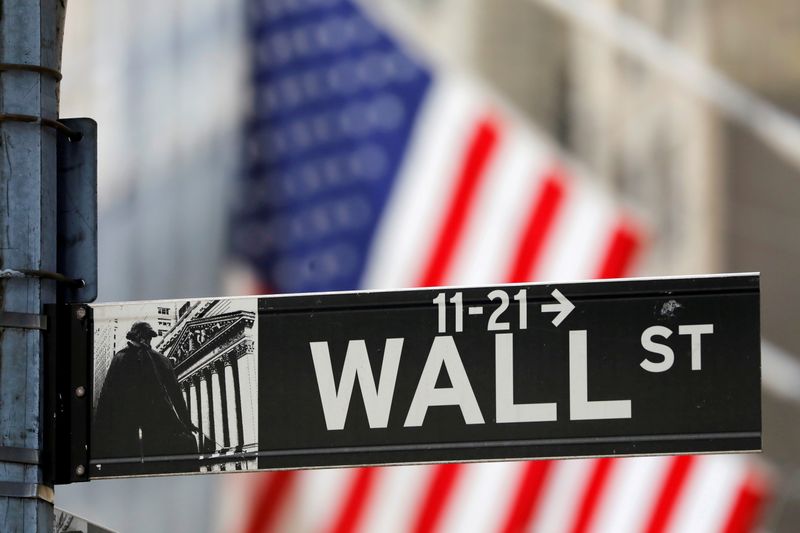NEW YORK (Reuters) – The S&P 500 ended slightly down on Thursday, paring losses in late trading after unexpectedly strong retail sales data underscored the strength of the U.S. economic recovery.
The three major indexes spent much of the day in negative territory as rising U.S. Treasury yields pressured market-leading tech stocks, and the rising dollar weighed on exporters.
Amazon.com Inc, buoyed by solid online sales in the Commerce Department’s report, helped push the Nasdaq into positive territory.
“Looking at today, clearly we had positive news from retail sales and it looks as if the massive slowdown in the economy is not materializing as a lot of people expected,” said Ryan Detrick, senior market strategist at LPL Financial in Charlotte, North Carolina.
“It’s a nice reminder that the economy is still taking two steps forward for each step back even amid the COVID concerns,” Detrick added.
Economically sensitive transports and microchips were among the outperformers.
Data released before the opening bell showed an unexpected bump in retail sales as shoppers weathered Hurricane Ida and the COVID Delta variant, evidence of resilience in the consumer, who contributes about 70% to U.S. economic growth.
“Once again, it shows the U.S. consumer continues to spend and continues to help this economy grow,” Detrick said.
The Dow Jones Industrial Average fell 63.07 points, or 0.18%, to 34,751.32; the S&P 500 lost 6.95 points, or 0.16%, at 4,473.75; and the Nasdaq Composite added 20.40 points, or 0.13%, at 15,181.92.
Eight of the 11 major sectors in the S&P 500 ended lower, with materials suffering the largest percentage drop.
The consumer discretionary spending sector posted the biggest gain, with Amazon.com doing the heavy lifting.
Apparel company Gap Inc gained 1.6%. Online marketplace Etsy Inc and luxury accessory company Tapestry Inc rose 3.1% and 1.9%, respectively.
Ford Motor Co rose 1.4% after it announced plans to boost production of its F-150 electric pickup model.
Declining issues outnumbered advancing ones on the NYSE by a 1.27-to-1 ratio; on Nasdaq, a 1.06-to-1 ratio favored advancers.
The S&P 500 posted nine new 52-week highs and one new low; the Nasdaq Composite recorded 82 new highs and 94 new lows.
Volume on U.S. exchanges was 9.37 billion shares, compared with the 9.44 billion average over the last 20 trading days.
(Reporting by Stephen Culp; Additional reporting by Ambar Warrick in Bengaluru; Editing by Richard Chang)

























